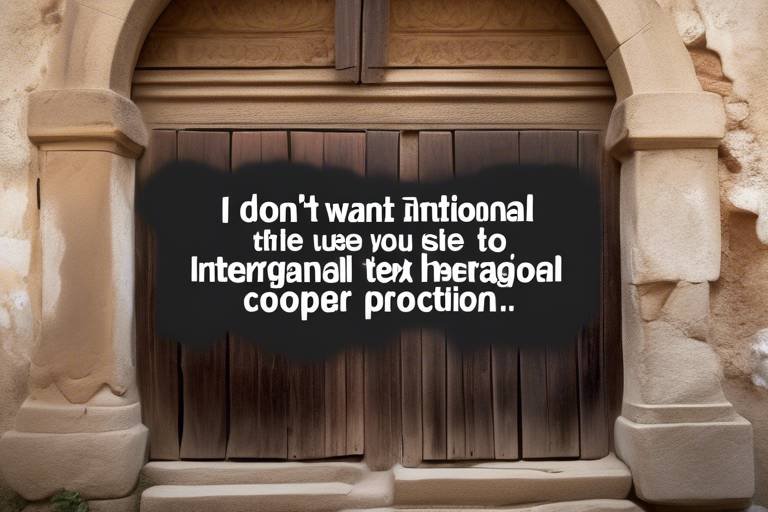An Overview of Mesopotamian Deities and Their Worship
When delving into the ancient Mesopotamian pantheon, one is met with a fascinating tapestry of deities that were revered and worshipped by the civilizations of the region. These gods and goddesses played pivotal roles in the lives of the ancient people, influencing various aspects of their existence and shaping their beliefs.
The worship of Mesopotamian deities was not merely a formality but a deeply ingrained practice that permeated every facet of society. From the rulers to the common folk, everyone participated in rituals and ceremonies to honor and seek the favor of these divine beings.
Temples stood as majestic structures dedicated to the gods, serving as sacred spaces where mortals could commune with the divine. These architectural wonders were not just buildings but symbolic representations of the connection between the earthly realm and the realm of the gods.
Mythology in Mesopotamia was a vibrant tapestry of stories that wove together the fabric of the universe, explaining the creation of the world, the feats of heroic figures, and the interactions between gods and mortals. These tales were not just entertainment but served as moral lessons and explanations for the mysteries of existence.
The symbols and iconography associated with Mesopotamian deities were rich in meaning and symbolism, each representing a facet of the divine being it embodied. These symbols adorned temples, artifacts, and art pieces, serving as visual cues to the power and significance of the gods.
Interactions between mortals and deities were believed to be dynamic and multifaceted, with gods granting blessings, protection, or sometimes testing the faith and loyalty of their worshippers. These interactions were seen as a vital aspect of the relationship between humans and the divine.
As beliefs and practices evolved over time, Mesopotamian religion underwent transformations influenced by external factors and internal developments. The worship of deities adapted to changing circumstances, reflecting the dynamic nature of religious beliefs in the region.
The legacy of Mesopotamian deities and their worship endures to this day, their influence echoing in modern religious and cultural contexts. The rich tapestry of beliefs and practices from ancient Mesopotamia continues to captivate and inspire, offering insights into the spiritual lives of our ancestors.
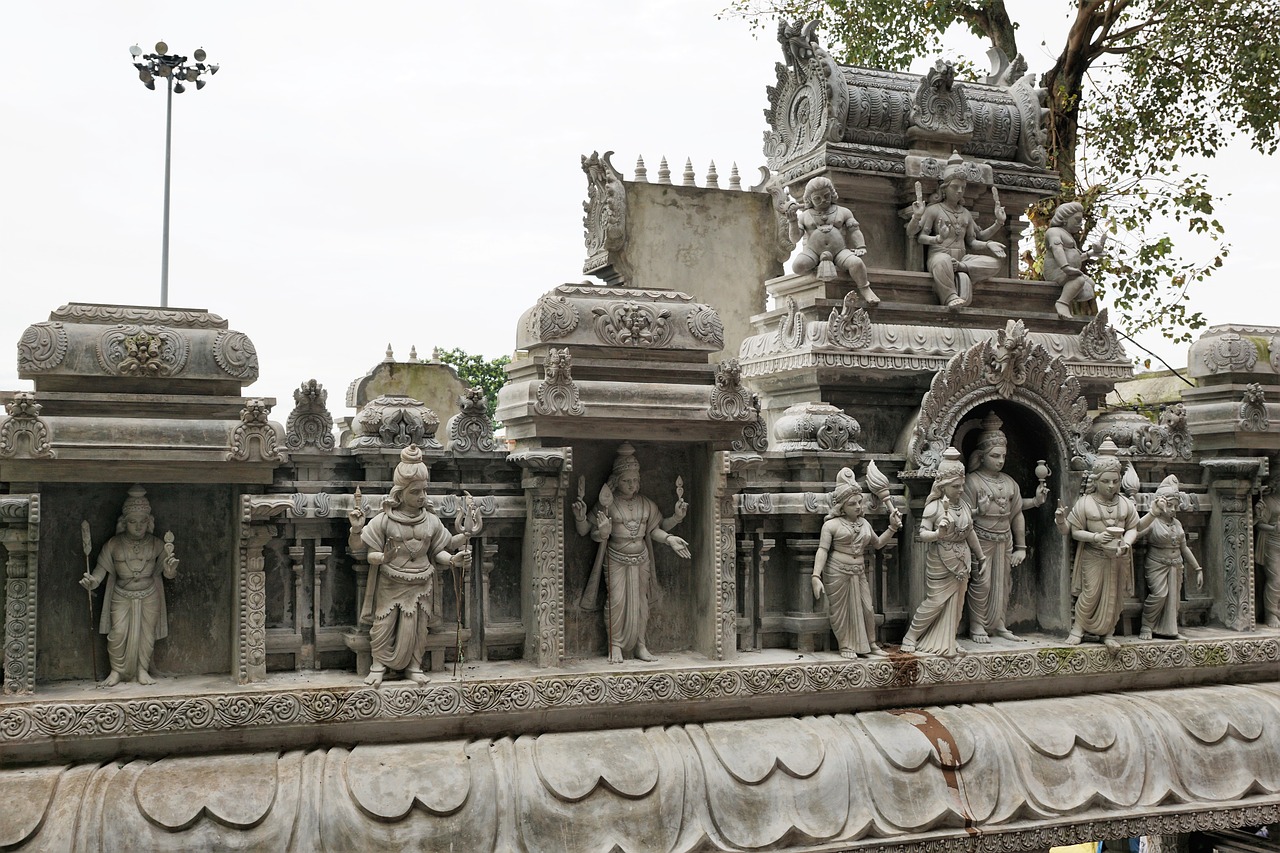
The Pantheon of Mesopotamian Deities
The pantheon of Mesopotamian deities is a fascinating tapestry of gods and goddesses, each with their own unique characteristics and significance in the ancient civilization's religious beliefs. From powerful deities governing the heavens to benevolent goddesses presiding over fertility and protection, the Mesopotamian pantheon reflects a complex and multifaceted system of divine beings.
At the forefront of this pantheon stands Anu, the god of the sky and king of the gods, embodying authority and cosmic order. Alongside him, Enlil, the god of wind and storms, wields immense power and influence, shaping the natural world according to his will. Inanna, the goddess of love and war, captivates with her dual nature, embodying both passion and destruction.
Among the prominent deities are also Ea, the god of wisdom and magic, revered for his knowledge and cunning, and Ninhursag, the mother goddess of fertility and healing, nurturing life and growth. Ishtar, the goddess of love and fertility, commands both desire and destruction, embodying the cycles of creation and destruction.
As the Mesopotamian people navigated the complexities of life, they turned to these deities for guidance, protection, and blessings, seeking to establish a harmonious relationship with the divine forces that governed their world. The pantheon offered a diverse array of deities to whom individuals could turn in times of need, each offering unique strengths and attributes to aid their worshippers.
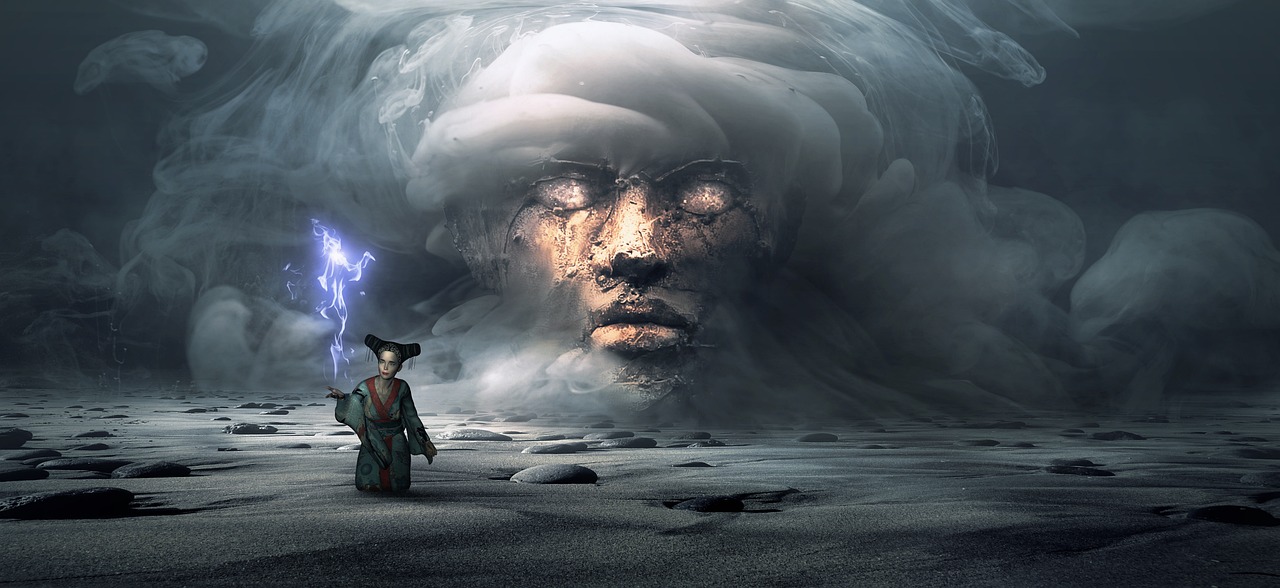
Religious Practices and Rituals
Religious practices and rituals held a central place in the lives of the ancient Mesopotamians, serving as a vital link between the mortal realm and the divine. The people of this region believed that performing these rituals was essential to maintaining harmony with the gods and ensuring the well-being of their communities. One of the most prominent rituals was the act of offering sacrifices to the deities, ranging from simple offerings of food and drink to more elaborate ceremonies involving animals or valuable goods.
Temples played a crucial role in these religious practices, serving as the focal point for worship and ritual activities. These grand structures were believed to be the earthly abodes of the gods, and the Mesopotamians spared no expense in adorning them with intricate decorations and precious artifacts. Priests and priestesses, acting as intermediaries between the people and the deities, conducted ceremonies within these sacred spaces, invoking the blessings of the gods and seeking their favor.
Another significant aspect of Mesopotamian religious practices was the performance of divination and oracles. Seeking guidance from the gods, individuals would consult priests or priestesses who possessed the ability to interpret signs and omens. These practices were believed to offer insights into the will of the deities and provide direction in matters of importance, such as warfare, agriculture, or personal decisions.
Furthermore, festivals and processions held in honor of specific deities were common occurrences in Mesopotamian religious life. These events were marked by music, dance, feasting, and elaborate rituals designed to celebrate the gods and express gratitude for their blessings. The entire community would come together during these occasions, fostering a sense of unity and shared devotion to the divine beings that governed their world.
Overall, religious practices and rituals in ancient Mesopotamia were deeply intertwined with every aspect of daily life, shaping the beliefs, values, and actions of the people. The elaborate ceremonies, sacred spaces, and interactions with the divine all contributed to a rich tapestry of spiritual traditions that defined the civilization and left a lasting legacy for future generations to ponder and explore.
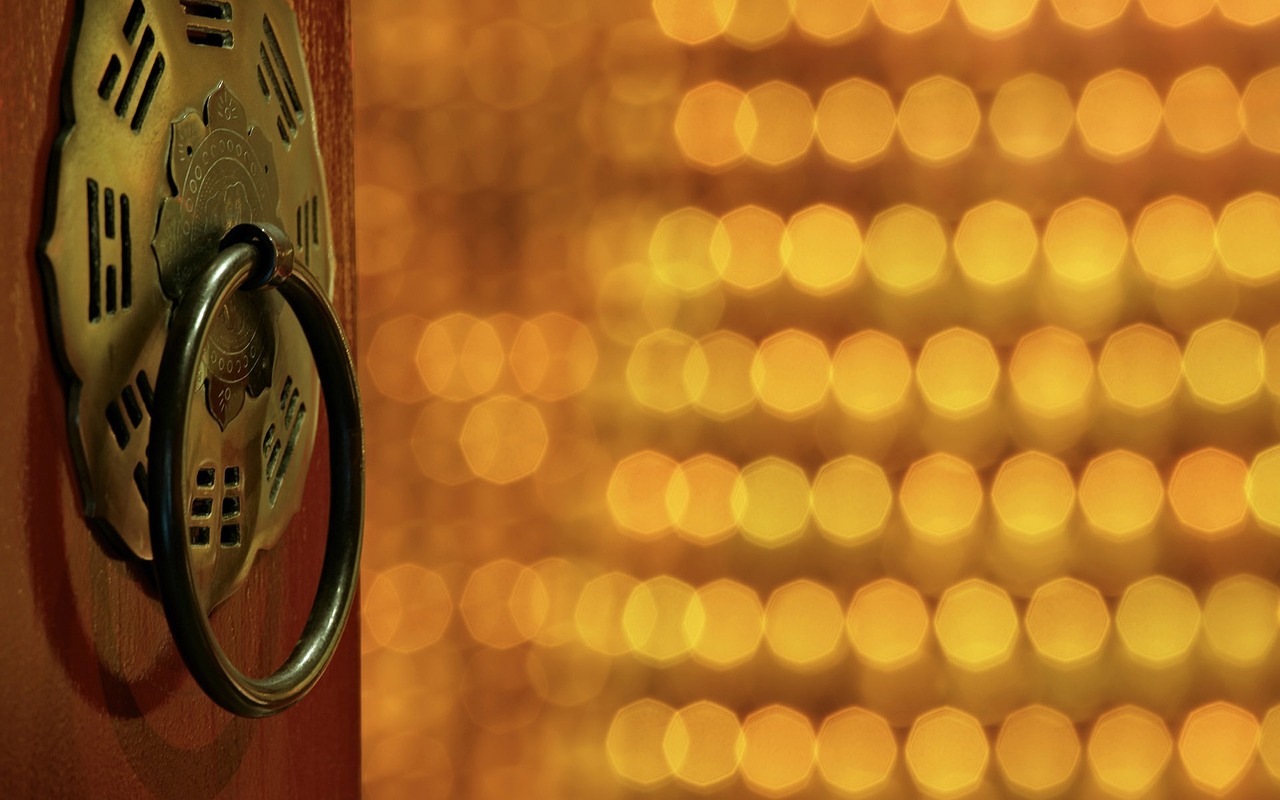
Temples and Sacred Spaces
Temples and sacred spaces held a central role in Mesopotamian religious practices, serving as physical manifestations of the connection between the mortal world and the divine realms. These sacred structures were not merely places of worship but were believed to be the literal homes of the gods and goddesses worshipped by the ancient Mesopotamians. The temples were constructed with meticulous detail and grandeur, reflecting the importance of these deities in the lives of the people.
One of the most renowned temples in Mesopotamia was the ziggurat, a massive stepped pyramid structure that symbolized the link between heaven and earth. These towering edifices were dedicated to specific deities and served as the focal point of religious ceremonies and offerings. The ziggurats were seen as sacred mountains, with the temple at the summit representing the abode of the patron deity.
Within these temples, priests and priestesses conducted elaborate rituals and ceremonies to honor the gods and seek their favor. Offerings of food, drink, and incense were presented to the deities, accompanied by prayers and hymns sung in their praise. The inner sanctuaries of the temples were considered the most sacred spaces, accessible only to the chosen few who served as intermediaries between the mortal realm and the divine.
Furthermore, these sacred spaces were not limited to temples alone but extended to include shrines, altars, and other religious sites scattered throughout Mesopotamia. Each city had its own patron deity and associated temple, fostering a strong sense of community and religious identity among the inhabitants. The presence of these sacred spaces permeated all aspects of daily life, influencing everything from governance to agriculture.
The Mesopotamians believed that maintaining the sanctity of these temples and sacred spaces was crucial for ensuring the well-being of their civilization. Neglecting the rituals and offerings could result in divine wrath and calamity befalling the people. As such, the temples were meticulously cared for and adorned with precious materials and artwork, reflecting the wealth and devotion of the worshippers.
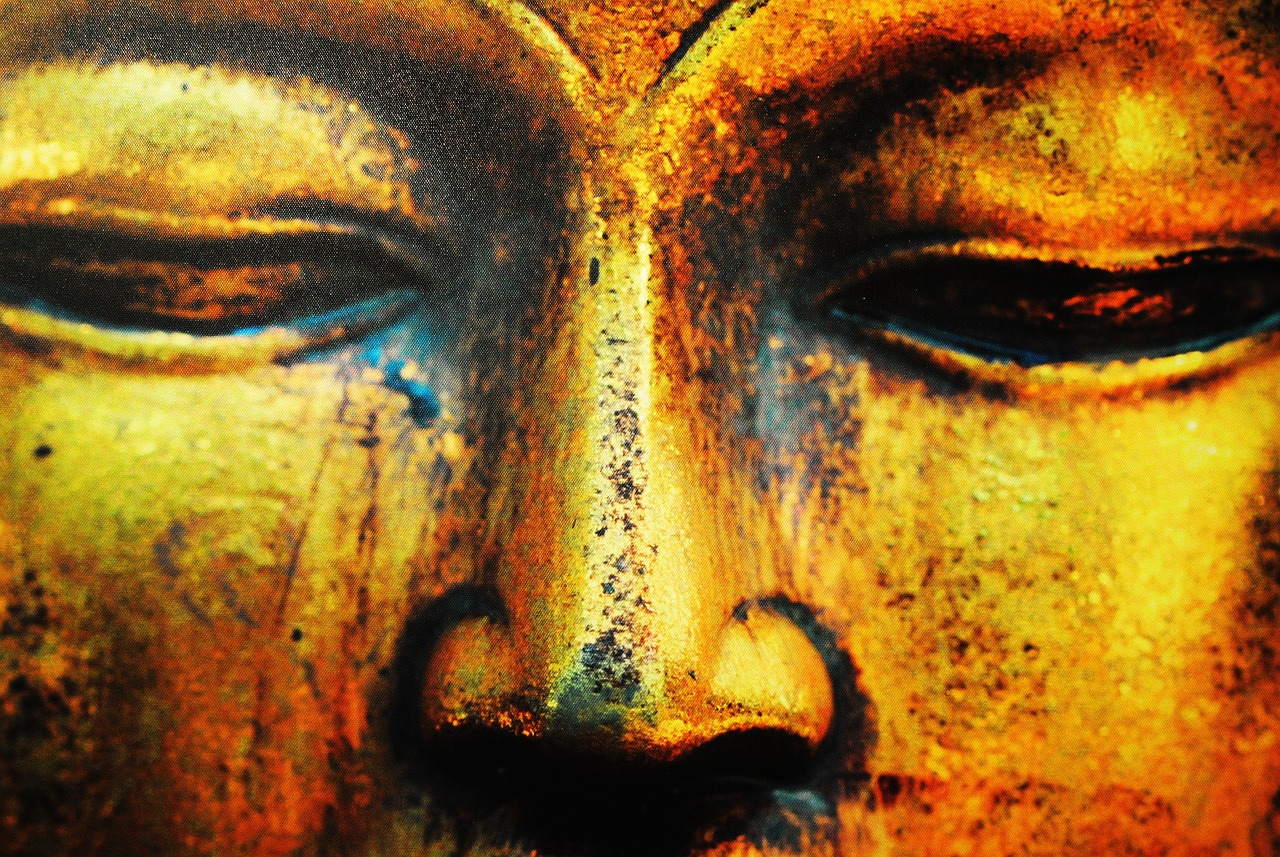
Mythology and Stories
Mythology and Stories in ancient Mesopotamia were not mere tales but intricate narratives that shaped the very fabric of society and belief systems. These stories were not just entertainment but served as a way to explain the origins of the world, the roles of gods and goddesses, and the interactions between the divine and mortal realms.
The Mesopotamian myths were filled with epic battles, creation stories, and moral lessons that reflected the values and fears of the people. One of the most famous tales from Mesopotamian mythology is the Enuma Elish, the Babylonian creation myth that describes the birth of the world from the chaos of primordial waters and the struggles of gods for supremacy.
Another prominent figure in Mesopotamian mythology is Gilgamesh, the legendary king of Uruk, whose adventures and quest for immortality have been immortalized in the Epic of Gilgamesh, one of the oldest surviving works of literature in the world. The story of Gilgamesh explores themes of friendship, mortality, and the search for meaning in a world ruled by capricious deities.
Moreover, Mesopotamian mythology is replete with stories of divine intervention, where gods and goddesses directly influenced the lives of mortals, sometimes as benefactors and other times as enforcers of justice. These tales served not only as entertainment but also as a way to instill moral values and reinforce the importance of piety and obedience to the deities.
Through these myths and stories, the ancient Mesopotamians sought to make sense of the world around them, finding meaning in the chaos and uncertainty of existence through the lens of divine intervention and cosmic order. The rich tapestry of Mesopotamian mythology continues to captivate and inspire, offering a glimpse into the beliefs and imaginations of a civilization long gone but whose legacy endures in the annals of history.
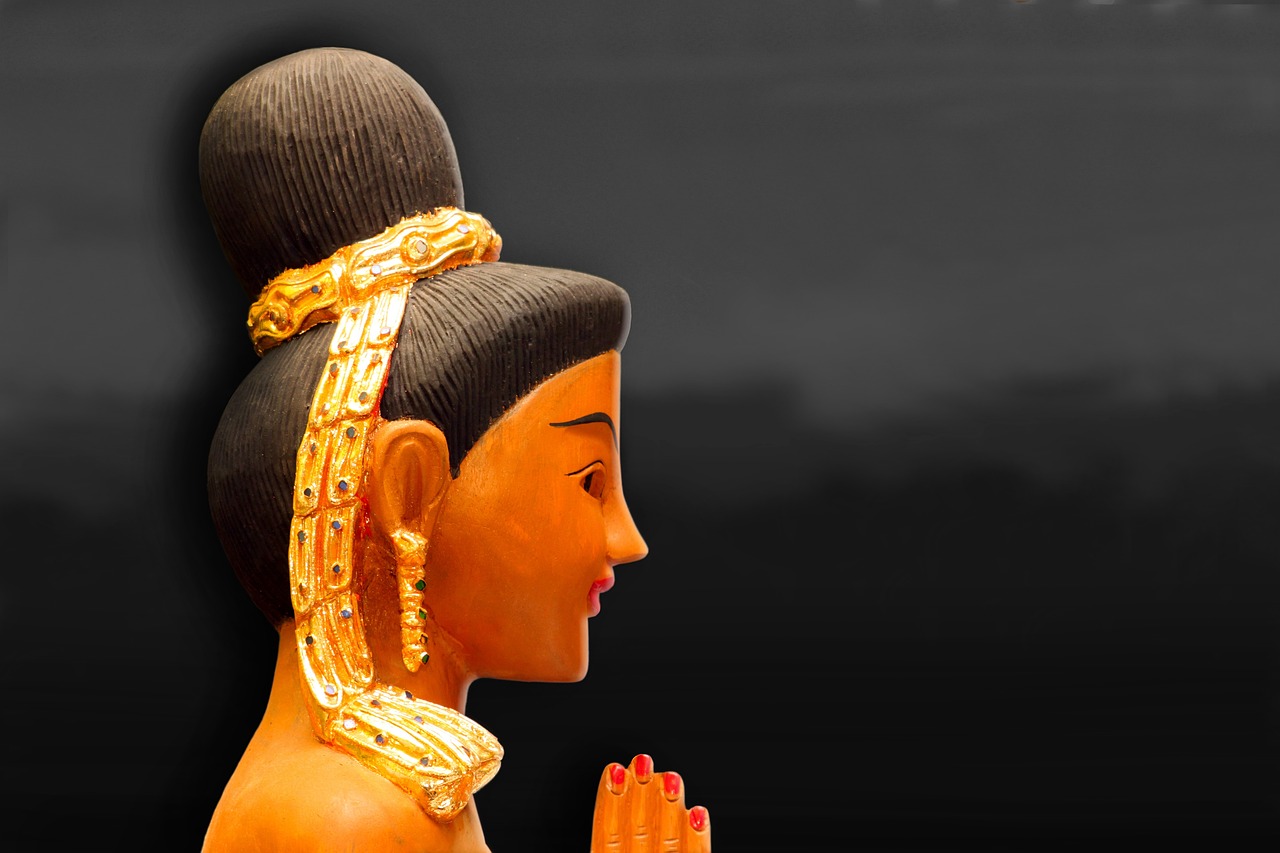
Symbolism and Iconography
Symbolism and iconography played a crucial role in Mesopotamian religious practices, serving as powerful visual representations of the deities and their attributes. Each god and goddess was associated with specific symbols that conveyed their roles and powers to the ancient worshippers. For example, the symbol of the winged sun disk represented the god Shamash, the sun god and bringer of justice. This symbol was often depicted in reliefs and inscriptions in temples, emphasizing Shamash's importance in the pantheon.
Moreover, iconography in Mesopotamian art was not merely decorative but held deep religious significance. The intricate carvings and paintings on temple walls and statues conveyed mythological narratives and divine interactions, allowing worshippers to visually connect with the stories of their gods. The use of symbols like the horned headdress or the divine weapons wielded by deities served to emphasize their divine status and authority over mortal affairs.
Furthermore, the placement of symbols and iconography in sacred spaces such as temples was carefully considered to create a sense of awe and reverence among the worshippers. The intricate designs and motifs adorning religious artifacts and architecture were believed to act as conduits for divine energy, facilitating communication between the mortal realm and the divine realm. This visual language of symbols and iconography was integral to the religious experience of the Mesopotamians, shaping their understanding of the supernatural forces at play in their lives.
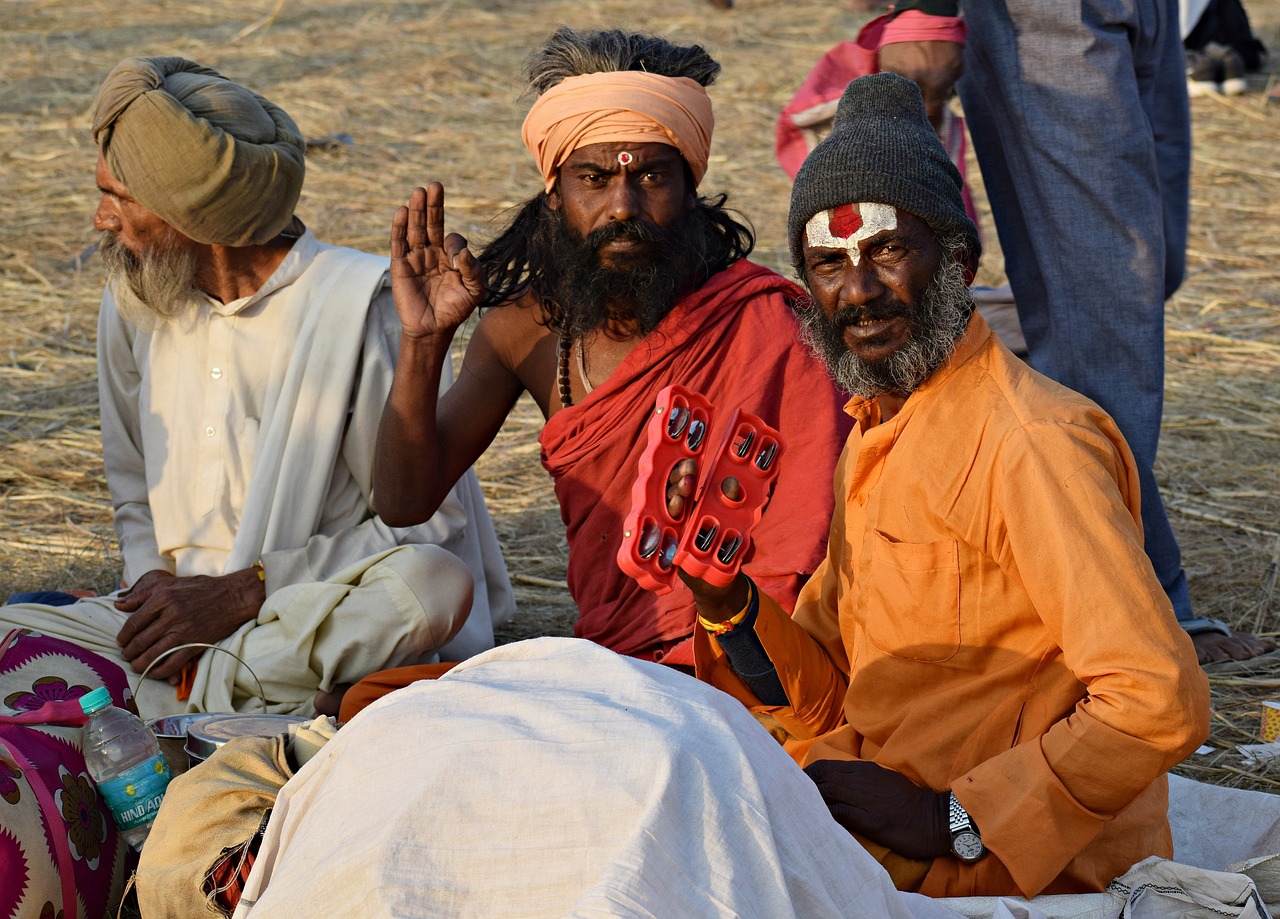
Interactions with Mortals
When it comes to the Mesopotamian deities, their interactions with mortals were a complex tapestry of benevolence, wrath, and divine guidance. These gods and goddesses were believed to play an active role in the lives of the ancient people, influencing everything from daily affairs to major events.
One of the key aspects of these interactions was the concept of blessings and protection. Mesopotamian deities were often called upon for their blessings, whether it be for a bountiful harvest, success in battle, or the well-being of loved ones. The belief in divine protection permeated all aspects of life, offering a sense of security and comfort to the worshippers.
However, the relationship between mortals and deities was not always harmonious. Mesopotamian mythology is rife with stories of gods and goddesses meting out punishment to those who defied them or strayed from the path of righteousness. These tales served as cautionary reminders of the consequences of angering the divine beings.
Moreover, the Mesopotamian deities were also believed to test the faith and loyalty of their worshippers. Through trials and challenges, mortals were given the opportunity to prove their devotion and dedication to their chosen deity. These tests were seen as opportunities for spiritual growth and development.
Overall, the interactions between Mesopotamian deities and mortals were dynamic and multifaceted, shaping the religious beliefs and practices of the ancient civilizations in profound ways. The intricate balance of blessings, protection, punishment, and tests created a rich tapestry of divine involvement in the lives of the people.
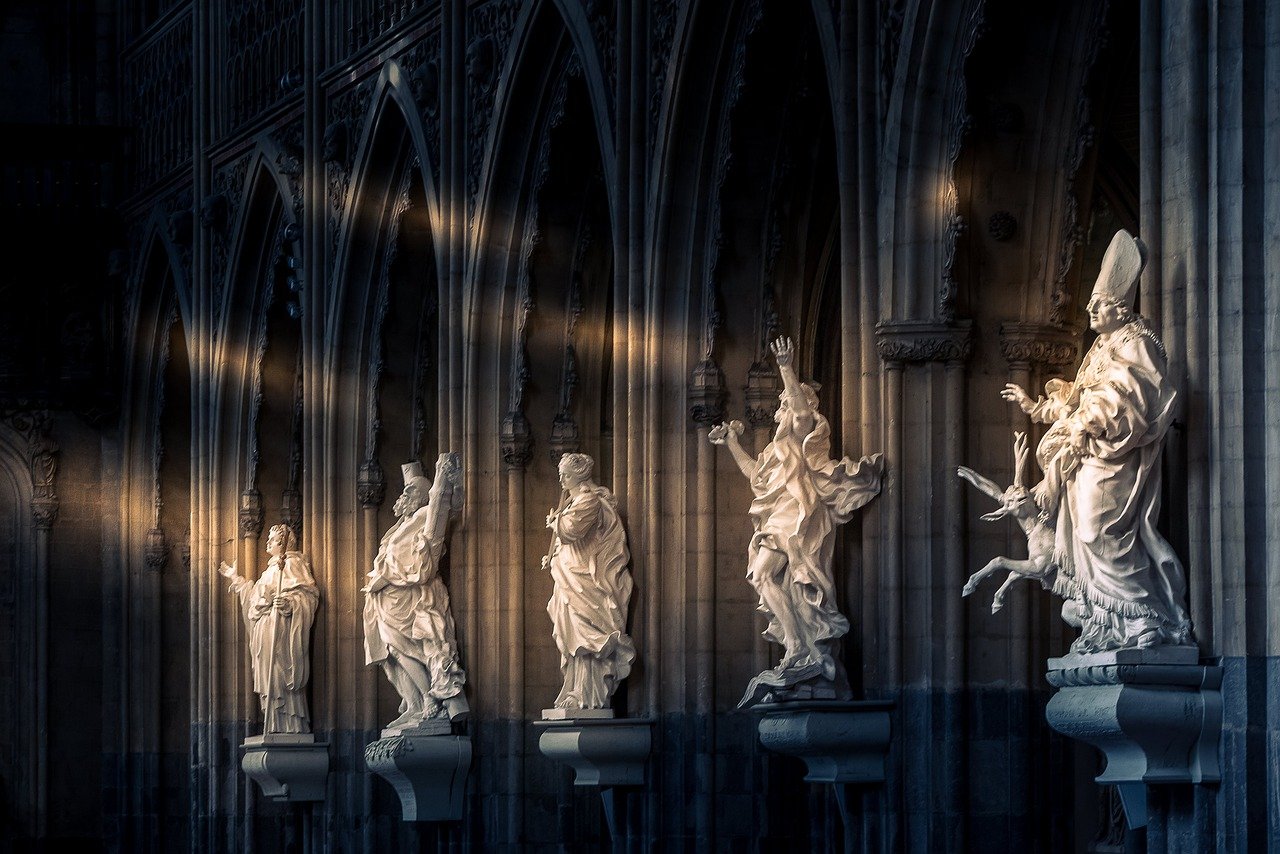
Evolution of Beliefs and Practices
Throughout the ancient history of Mesopotamia, the evolution of beliefs and practices surrounding the worship of deities underwent significant transformations. The early Mesopotamian civilizations, such as the Sumerians and Akkadians, held polytheistic beliefs, worshipping a multitude of gods and goddesses associated with various aspects of life. These deities were revered through elaborate rituals and offerings, with temples serving as sacred spaces for communication with the divine.
As time progressed, the pantheon of Mesopotamian deities expanded and evolved, incorporating influences from neighboring cultures and adapting to changing societal dynamics. The Babylonians and Assyrians, for example, introduced new gods and reinterpreted existing ones, reflecting shifts in political power and cultural exchange.
The beliefs and practices surrounding Mesopotamian deities were deeply intertwined with daily life, influencing social structures, governance, and personal decisions. The concept of divine intervention in human affairs was pervasive, with rituals and sacrifices seen as essential for maintaining harmony between the mortal realm and the divine realm.
One notable aspect of the evolution of Mesopotamian beliefs was the emergence of epic myths and stories that provided explanations for the creation of the world, the origins of humanity, and the struggles between gods and mortals. These narratives not only entertained but also served to reinforce cultural values and religious teachings.
Over time, the worship of Mesopotamian deities became more standardized, with established priesthoods overseeing religious ceremonies and ensuring the proper conduct of rituals. Temples grew in size and complexity, becoming centers of economic, political, and religious activity within city-states.
External influences, such as conquests and invasions, also played a role in shaping the evolution of Mesopotamian beliefs and practices. The assimilation of foreign deities and religious customs contributed to the syncretism of Mesopotamian religion, creating a diverse tapestry of beliefs that reflected the region's multicultural landscape.
Despite the eventual decline of Mesopotamian civilization, the legacy of its deities and religious practices endured, leaving a lasting impact on subsequent cultures and belief systems. The evolution of Mesopotamian beliefs serves as a testament to the dynamic nature of religious thought and the enduring power of myth and symbolism in shaping human spirituality.
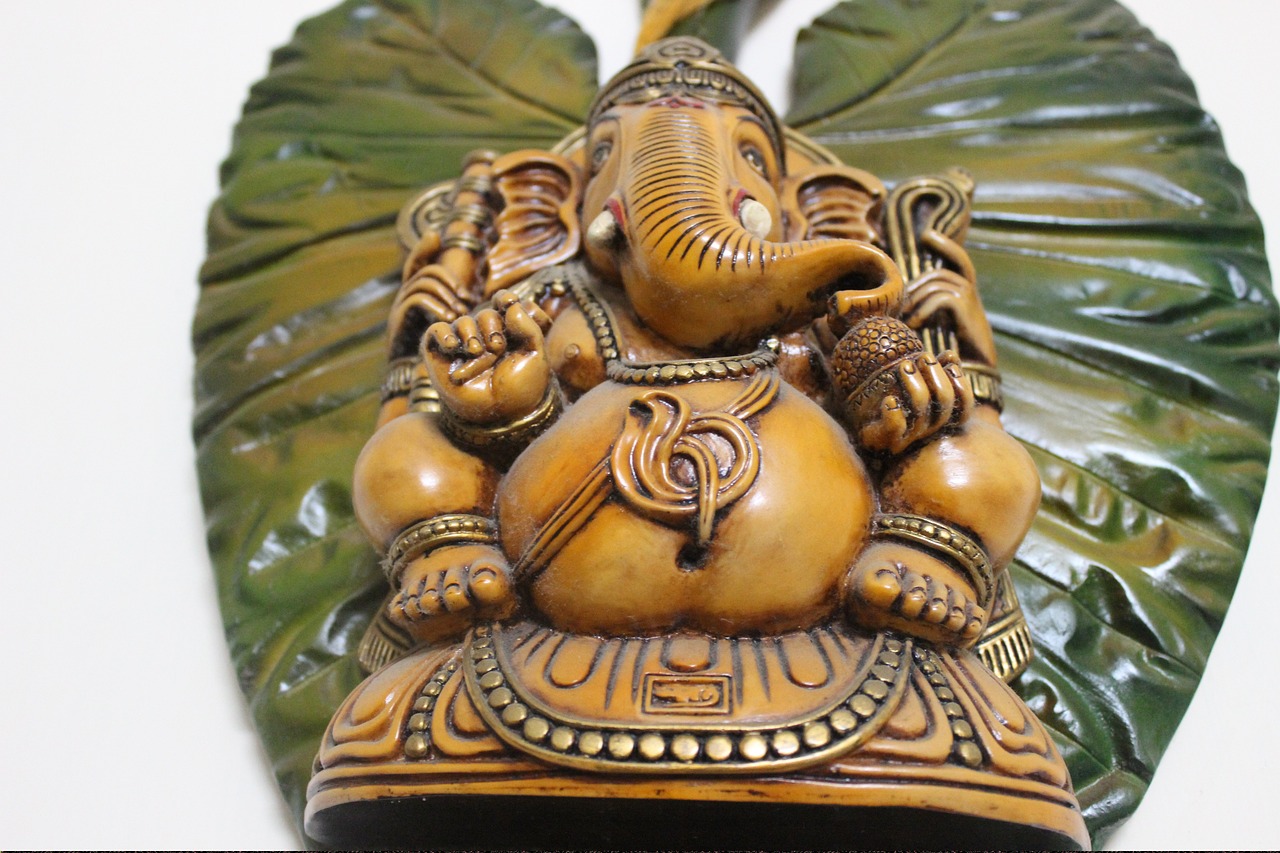
Legacy and Influence
Reflect on the enduring legacy of Mesopotamian deities and their worship, considering how these ancient beliefs continue to resonate in modern religious and cultural contexts. The influence of Mesopotamian mythology and religious practices can be seen in various aspects of contemporary society, from literature and art to religious symbolism and cultural traditions.
One of the most significant legacies of Mesopotamian deities is their impact on the development of religious thought and practices in subsequent civilizations. Many concepts and motifs from Mesopotamian mythology have been adopted and adapted by later religions, influencing the beliefs and rituals of cultures far beyond the ancient Near East.
Furthermore, the iconography and symbolism associated with Mesopotamian deities have endured through the ages, appearing in various forms of art and religious expression. The depictions of gods and goddesses, as well as the symbols representing them, continue to evoke a sense of awe and mystery, connecting modern audiences to the ancient world.
Moreover, the stories and myths of Mesopotamian deities have inspired countless works of literature and art, serving as a source of creativity and imagination for generations of artists and writers. The epic tales of gods and heroes, the struggles between divine forces, and the cosmic themes of creation and destruction have left a lasting imprint on the cultural heritage of humanity.
In conclusion, the legacy and influence of Mesopotamian deities and their worship are profound and enduring, shaping the religious, artistic, and cultural landscapes of both the past and the present. By exploring the rich tapestry of Mesopotamian mythology and religious practices, we gain a deeper understanding of the complexities of human belief and the enduring power of ancient traditions.
Frequently Asked Questions
- What were the most important deities in Mesopotamian religion?
The Mesopotamian pantheon consisted of numerous deities, but some of the most prominent ones included Anu, Enlil, and Ishtar. Anu was the god of the heavens, Enlil was the god of the air and storms, and Ishtar was the goddess of love and war.
- What were the main religious practices of the Mesopotamians?
The Mesopotamians engaged in various rituals and ceremonies to honor their deities, such as offering sacrifices, prayers, and participating in festivals. They believed in the importance of maintaining a harmonious relationship with the divine through these practices.
- How did Mesopotamians believe their deities interacted with mortals?
According to Mesopotamian beliefs, deities could influence the lives of mortals by granting blessings, protection, or even punishments. They were seen as powerful beings who could impact human affairs and were to be revered and appeased through worship.
- What is the significance of temples in Mesopotamian religion?
Temples were considered sacred spaces where the Mesopotamians could commune with their deities. They served as the focal points of religious life, hosting ceremonies, rituals, and offerings to honor the gods and goddesses of the pantheon.
- How did Mesopotamian mythology influence their religious beliefs?
Mesopotamian mythology played a crucial role in shaping the religious worldview of the ancient people. Myths and stories about the gods and goddesses helped explain the natural world, human existence, and the relationship between mortals and the divine.











